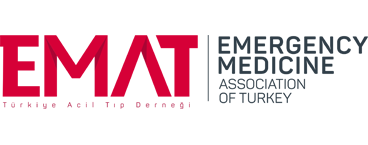Serum S100B Protein as an Outcome Prediction Tool in Emergency Department Patients with Traumatic Brain Injury
Mohsen ABBASI1, Mahmoudreza SAJJADI1, Marzieh FATHI2, Mohammadreza MAGHSOUDI1
1Iran University of Medical Sciences, Iran
2Shiraz University of Medical Sciences, Iran
Keywords: Biomarker; head trauma; S100B protein; traumatic brain injury
Abstract
Objectives
Traumatic brain injury is a common cause of death and disability worldwide. Early recognition of patients with brain cellular damage allows for early rehabilitation and patient outcome improvement.
Methods
In this prospective study, the clinical conditions of patients with mild to moderate traumatic brain injury (TBI) were assessed, and patient serum S100B levels were measured. Patients were followed up one month later and evaluated for level of consciousness, presence or absence of post-traumatic headache, and daily activity performance (using the Barthel scale). Student's t-test and the chi-square test were used for data analysis, which was performed using SPSS software.
Results
The mean serum S100B value was significantly lower for patients with minor TBI than for patients with moderate TBI (23.1±14.2 ng/dl and 134.0±245.0 ng/dl, respectively). Patients with normal CT scans also had statistically significantly lower serum S100B levels than patients with abnormal CT findings. The mean S100B value was statistically significantly higher for patients with suspected diffused axonal injury (632.18±516.1 ng/dl) than for patients with other abnormal CT findings (p=0.000): 24.97±22.9 ng/dl in patients with normal CT results; 41.56±25.7 ng/dl in patients with skull bone fracture; 57.38 ±28.9 ng/dl in patients with intracranial hemorrhage; and 76.23±38.3 ng/dl in patients with fracture plus intracranial hemorrhage).
Conclusions
Serum S100B levels increase in patients with minor to moderate TBIs, especially in those with diffused axonal injury. However, serum S100B values cannot accurately predict one-month neuropsychological outcomes and performance.

